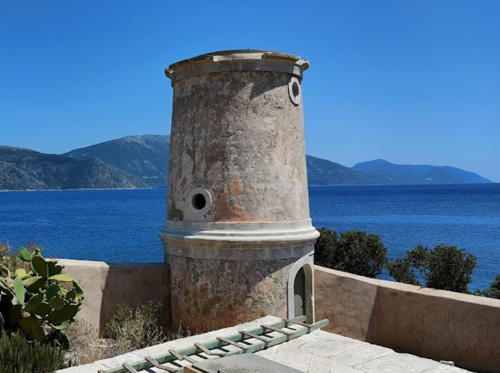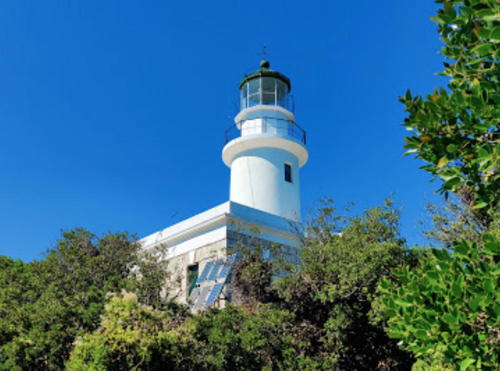The nation of Greece occupies a complex peninsula at the southeastern corner of Europe plus a large number of islands in the Aegean Sea to the east and the Ionian Sea to the west. The name Greece is of Roman origin (Graecia in Latin); the traditional name of the country is Hellas (Ἑλλάς) and its official name is the Hellenic Republic (Ελληνική Δημοκρατία, Ellinikí Demokratía).
The modern Greek nation is a relatively recent creation. After several centuries of rule by the Ottoman (Turkish) Empire southern Greece won its independence in a bitter struggle during the 1820s. When its independence was recognzied in 1830 Greece included the southern half of the Greek Peninsula plus the islands of the Cyclades. The nation expanded northward in several steps. Thessaly was ceded to Greece in 1881, Epirus and Macedonia were added after the Balkan Wars of 1912-13, and West Thrace became Greek in 1920.
The Ionian Islands lie in the Ionian Sea off the western coast of mainland Greece. There are seven major islands: Kérkyra (Corfu), Paxos, Antipaxos, Lefkada (Lefkos), Ithaki (Ithaca), Kefalonia (Cephalonia), and Zakynthos (Zante). These islands comprise one of the country's 13 administrative regions, called periferies (περιφέρειες). The region is divided into five districts called regional units (enótites, ενότητες).
The history of the islands is distinct from that of the Greek mainland. For many centuries they were controlled by Venice as outposts of its commercial empire, the Stato da Màr. Because of the long rule by Venice there is a strong Italian influence in the islands and they are often known by their Italian names. During the Napoleonic Wars they came under French rule but were later conquered by Britain. At the end of the wars in 1815 the Treaty of Paris left the British in control, administering the islands as a protectorate and using them as naval bases. The islands were finally transferred to Greece in 1864. Five of the lighthouses in the islands were built during the half century of British rule.
The island of Kythira, located off the southeastern corner of the Greek mainland, is also considered to be one of the Ionian Islands, but it is remote from the others and is attached to the region of Attica. Lighthouses of Kythira are listed on the Southern Greece page.
The Greek word for a lighthouse, pháros or fáros (φάρος), is the root for the words for lighthouse in many Western European languages. In Greek nisi is an island, ýfalos is a shoal or reef, akrotíri or ákra is a cape or headland, kolpós is a bay or gulf, ekvolí is an estuary, potámi is a river, and limáni is a port or harbor.
Lighthouses in Greece are maintained by the Hellenic Navy Lighthouse Service.
ARLHS numbers are from the ARLHS World List of Lights. Admiralty numbers are from volume N of the Admiralty List of Lights & Fog Signals. U.S. NGA List numbers are from Publication 113.
- General Sources
- Lighthouses of Greece
- A comprehensive site posted by amateur radio operator Pavlidis Savas (SV2AEL); it includes data and photos for 120 traditional Greek lighthouses.
- Online List of Lights - Greece - Ionian Sea and Adriatic Sea
- Photos by various photographers posted by Alexander Trabas. Many of the photos for the Ionian Islands are by Eckhard Meyer.
- Lighthouse Service - Photographs
- A large collection of unlabeled (!) photos of lighthouses.
- Lighthouses in Greece
- Aerial photos posted by Marinas.com.
- Greece Lighthouses
- Photos by Larry Myhre.
- Leuchttürme an der griechischen Küste
- Photos by various photographers posted by Bernd Claußen.
- Lighthouses in Greece
- Photos by various photographers available from Wikimedia.
- World of Lighthouses - Greece
- Photos by various photographers available from Lightphotos.net.
- GPS NavigationCharts
- Navigational chart information for Greece.
- Google Maps
- Satellite view of the islands.









